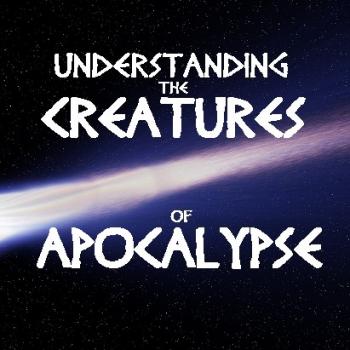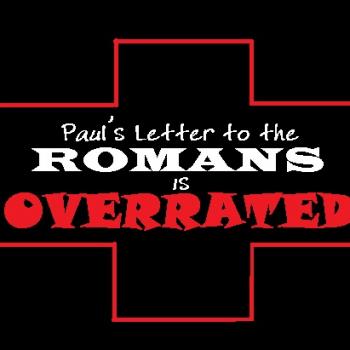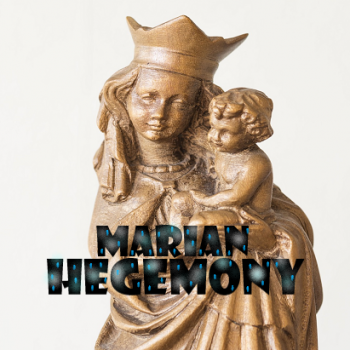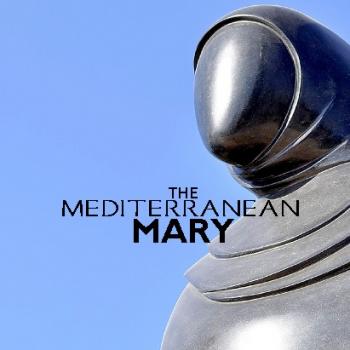
Hell—whether the popular Christian idea or official Church doctrine—took almost two thousand years to develop.
Hell, a state of permanent separation from God, is an essential to Catholic thought and Christian thought. Becoming “no” to God’s gift is a real possibility. In this sense, “hell” is the word we Christians use in our “clubhouse nomenclature” to point to the possibility of an eternalized relationship with God. There is a terrifying possibility that we can become “NO!” and “Screw off!” to God and God’s gifts. Does anyone actually do this?
The historical roots of hell are pretty deep. The roots lie fifty thousand years ago at least. This is where all cultures branch from and evolve out of, and where the shamanic concept of the Axis Mundi or “World Tree” originates as far back as we can tell. According to this view, the world is like a great tree. It changes with the seasons. Its branches hold the stars and gods. Its bark is our middle earth. The roots keep helper spirits, the fates, doppelgangers, and is the abode of the dead.
The late Context scholars John Pilch and Bruce Malina inform us that holy men and women found in each culture (called by anthropologists “shamans”) travel through the worlds on the Tree in spirit (i.e., in trance). The astral prophets Ezekiel (3:14-15) and John (Revelation 4:1-2) are two examples of such shamanic travelers from ancient Israel.
A Different Hell
“Hell,” as we Christians understand it, is obviously a far cry from the shamanic concept of the underworld (or roots of the Axis Mundi). But it may shock many Christians to learn that no Hebrew, Aramaic, or Greek words in the Bible can be properly translated into our English hell. Neither the ancient Shamanic underworld nor any Biblical idea is exactly what the English word “hell” means to Christians.
Our theologically evolved concept of “hell” has its roots in Biblical ideas, surely! This is true just as those Biblical ideas are themselves rooted in the shamanic Tree from 50,000 years ago. But please don’t confuse acorns with Oak Trees, or roots with branches. As we have warned readers before, beware anachronism.
Etymology of Hell and Hole
Our English word “hell” is indebted to Germanic culture and times. In his A Cultural Handbook to the Bible, John Pilch informs us of its derivation from the Middle English helle. A sister word is Hölle, which reminds of hole, as in a hole in the ground. It relates to the Norse goddess Hel (or Hella, if you are an MCU fan). Pilch explains that its old verb form helan means “to hide,” “cover,” or “conceal.”
To the extent that the English “hell” conveys hiding, concealing, or covering, Pilch and friends found it appropriately used to translate the Hebrew terms Sheol and Ge-Hinnom, and the Greek Hades also. The was because all of these terms speak of a reality imagined to be somewhere beneath the land (see Job 14:13; Isaiah 14:9; Matthew 11:23).
But what about a fiery underworld? Any imagery of fire connected to either gehenna (Matthew 5:22; 18:9) or hades (Luke 16:23-24) John Pilch explains as a subsequent evolution. This was a development that was not systematic. Generally speaking, the Biblical ideas of Sheol, Ge-Hinnom, Gehenna, and hades are all different Mediterranean evolved takes on the ancient shamanic lower world or abode of the dead that were specific to biblical Israel.
Understanding the Difference Between Hell and the Biblical Sheol
The Sheol we find in the Bible is an idea distant from the Christian hell. The Context Group explains that Sheol was not seen primarily as a place of punishment, but rather of shadows (in Hebrew, rĕpāʼîm; Isaiah 14:9).
Last week, we spoke about the relationship between the Hebrew words Sheol (the abode of the dead), the Hebrew verb šāʼal (meaning “to ask”) and the name of King Šāʾūl, who wants to inquire from alternate reality about the fate of his kingdom. Sheol, šāʼal, and Šāʾūl fit together. They are the same word; what makes the difference is the vowel sound or “spirit” a speaker breathes into these identical four Semitic consonants.
Darkness and Shadows
Not really a place of punishment, Sheol was the dark domain (Job 17:13) of shadows and doppelgangers. Silence rules it (Psalm 31:18). The dead who dwell there are not really full persons or latter Hellenic-conceived ghosts, but just shadows, a tiny slice of someone who once lived and breathed. This retains the ancient shamanic concept, often echoed and embellished in cinema for introspective audiences along Jungian fancies:
https://youtu.be/ApaU8Ilg774
https://youtu.be/hY8FEpLdfYI
https://youtu.be/aCETmnrhCrk
https://youtu.be/dwuPbFhZ-B8
Many of these Biblical shades cannot remember the God of Israel (Psalm 6:5-6). This is not the Christian idea of hell but again an evolved Israelite-specific notion in many ways harmonious with the earlier shamanic concept. Sheol is the dwelling place of the dead, mere shadows of their former lives.
Second Temple Period
But between 520 BCE and 70 CE, further theological evolution happened. Originally, shadowy Sheol was thought to be permanent and everlasting (note “…for the rest of my years” in Isaiah 38:10). But after Persian and Hellenic influences stirred into Israel, it began to be imagined of as an intermediate place that preceded reward for the honored righteous or punishment for the shameful wicked (Wisdom 9:15; 15:8).
Some Judeans began believing at this time that upon dying, the soul of the righteous would be taken up to God. The honored dead would be transformed bodily into a glorious star, whether singular or constellated. But the wicked would be punished with everlasting shame (Daniel 12:2; Josephus, Judean War 3.374-75. See also Matthew 11:23 and Luke 16:19-31).
Hell, by Way of Gehenna
South and Southwest of Jerusalem you can find the former first century site of a garbage pit and crematorium. This place is named Gehenna by New Testament documents. Gehenna is a Greek attempt at the Hebrew Ge-Hinnom, or “the valley of Hinnom.”
At one point, children were immolated here in sacrifice to the Canaanite god Moloch (2 Chronicles 28:3; 2 Kings 16:3). Two different New Testament documents associate its burial ground (Acts 1:19) with the death of the traitor, Judas (Matthew 27:3-10; Acts 1:16-19). These two different accounts don’t really gel together, aren’t 21st century Western biographies, and are not relating eye-witness accounts of anything. Take note, those obsessed with Judas!
This site of an ancient crematorium and location of Judas’ suicide would help give rise to the imagery of a fiery hell full of damned souls.
The Cosmic Gehenna
John Pilch explains that writings such as 1 Enoch (54:1-2) associate burning fires with punishing the wicked. Later Rabbinic traditions in the Babylonian Talmud express that the entry way to the underworld was located in Gehenna (‛Erubin 19a).
Satan and his angels belong there (Matthew 25:41). Those shameful reprobates restored in body will be utterly destroyed in this place where the cosmic viscera gathers and smolders (Matthew 10:28; Mark 9:42-48).
The Doctrine of Hell Evolved
John Pilch explains that these biblical ideas got mixed together and amplified over centuries. Christological (and hence, soteriological) debates raged, and this added to the developmental process of what would become the doctrine of hell.
By the end of the 600s, the Athanasian Creed explained the inferno awaiting the damned as eternal punishment for their sin. In 1214 the Fourth Lateran Council elaborated claiming that the damned are to be punished “with different punishments.”
The Second Vatican Council (1962-65) remained silent about hell. The Catechism of the Catholic Church (1994) goes further about hell than Vatican II, but it explains that its chief punishment is separation from God.
Are there real fires in hell? Is hell an actual place? Or is it an eternal relationship made possible through abusing freedom? Has anyone ever actualized this possibility?
Scaring the Hell Out of You
Ours is a time of rapid and tremendous change. Modern times have transformed our vision of the universe. In little over a century we learned how to fly. In just the few decades that followed we have sent men to the moon. We launched two Voyager spacecraft, and both have entered interstellar space.
Twenty-first century Christians often talk about hell or heaven or the earth and where these are in relation to each other, and find this all “clearly” expressed in Scripture. Consequently, they are distorting the texts with anachronism.
We are not too aware of the fact that how we have come to understand these concepts bears millennia of intellectual freight. So too we tend to be clueless as to what exactly our ancestors in the faith were communicating! Therefore, with this in mind, let’s stop proof-texting, folks.












